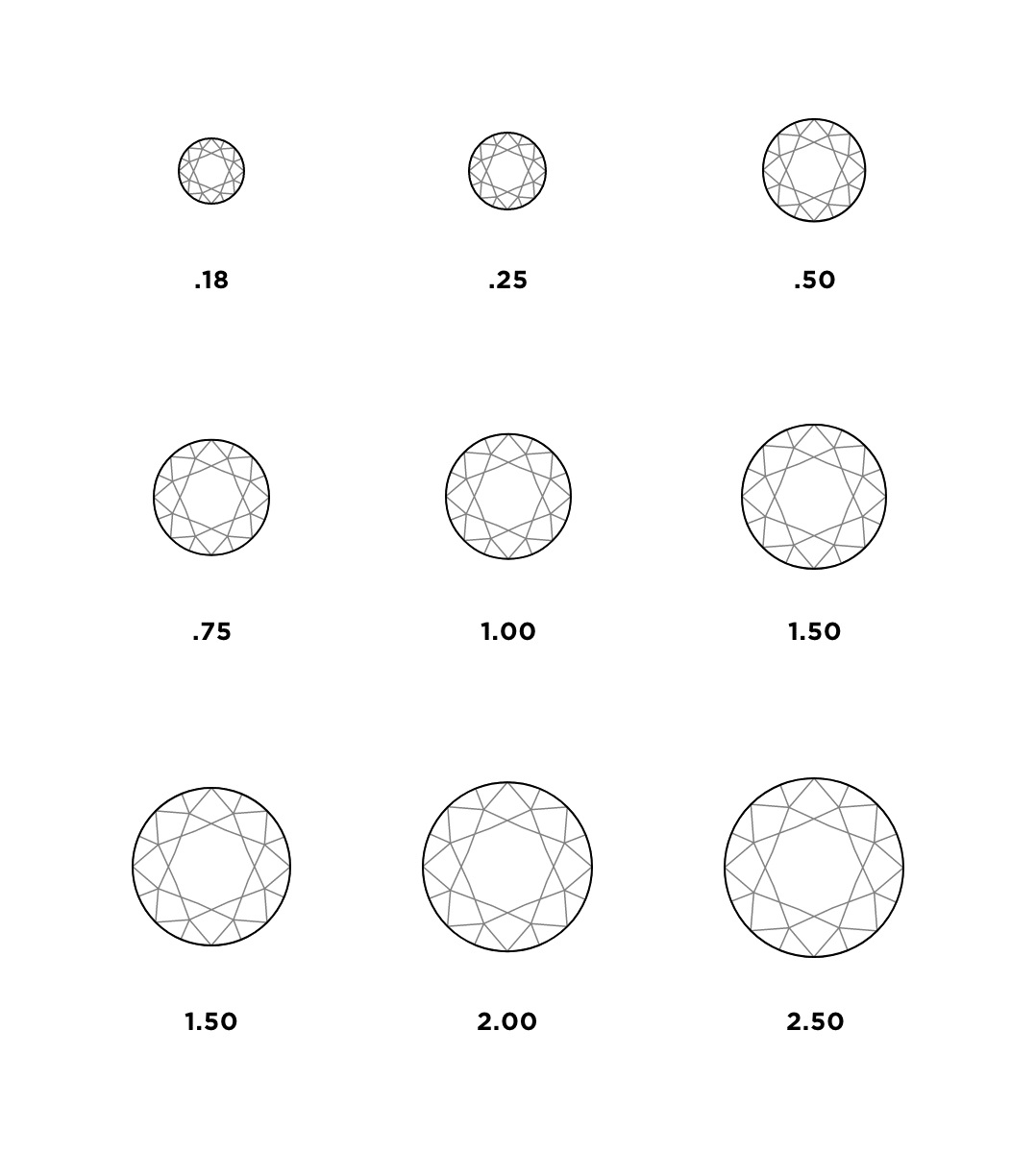
-
- Home
- About Us
- Contact Us
-
›
-
›
-
›
-
›
- Design With Us
- Login
Diamonds are not alike, whether mined from the earth or grown in a lab. While there are perfect ones, the vast majority of diamonds found in engagement rings and fine jewelry are imperfect. Choosing the right diamond is all about deciding how big, how perfect and how much it’s all worth to you. Take a deep dive into the GIA’s 4Cs of Diamond Quality to inform your buying decision.
Carat weight does not necessarily refer to the size of the diamond, but the weight of it. Most couples opt for a one-carat diamond, but the right carat weight for you will depend on how close to perfect you want the diamond to be and your overall budget. Though carat weight is a large contributor to a diamond’s price, all 4Cs play an important role in quality and price point.
Pro tip: Choosing a slightly smaller carat weight (such as .99 cw vs 1.00 cw) can save you a lot of money as diamonds tend to increase with each quarter step.

Diamonds, whether mined or natural diamond, have inclusions and blemishes that occur during the growth process. Diamonds range from Flawless to Included, with multiple grades in between. Can you see imperfections with the naked eye? Sometimes. Few diamonds are flawless. Choosing a stunning, but also affordable, diamond clarity requires deciding how many imperfections you’re comfortable with. You should also consider the placement of the imperfections in relation to the setting it will be paired with. Bezel settings often hide imperfections near the edge, while peg-head settings may make imperfections more visible. We don’t offer anything we deem too unclear for everyday wear, but the bigger the stone is, the more obvious blemishes will be.

Interestingly enough, diamond color actually refers to the lack of color. Perfect starts at D (colorless) and goes all the way to Z (visible color). Anything beyond Z is considered a “fancy color.” Most rings sold in the U.S. are H/I/J range, so they have a cast of color, which makes them imperfect (but cheaper). Most of the time, the color won’t be noticeable to the naked eye. Diamonds near the lower range have more obvious tints of color. We don’t sell anything really bad. That’s just not our standard. If you opt for a large carat weight over perfect color, consider pairing it with a warm metal type which will make the color less obvious.

Though commonly confused with the shape of a diamond, the cut grade actually has to do with how a diamond’s facets interact with light. Diamonds are renowned for their sparkle factor, so it’s no wonder this C is so important to a diamond’s overall quality. There are lots of ways to cut a diamond—from very precise and expensively done, to cheap and sloppy. When it comes to cut grade, there are three things that are measured: scintillation, which is the amount of sparkle a diamond emits; fire, which is the scattering of white light; and brilliance, which is determined by how the light is reflected from the diamond.
A common jeweler’s trick is to sell a big diamond with a bad cut at a “bargain” price. Not us. In fact, we have one of the most comprehensive grading models around. We would call it the “gold” standard, but we don’t want to toot our own horn.
